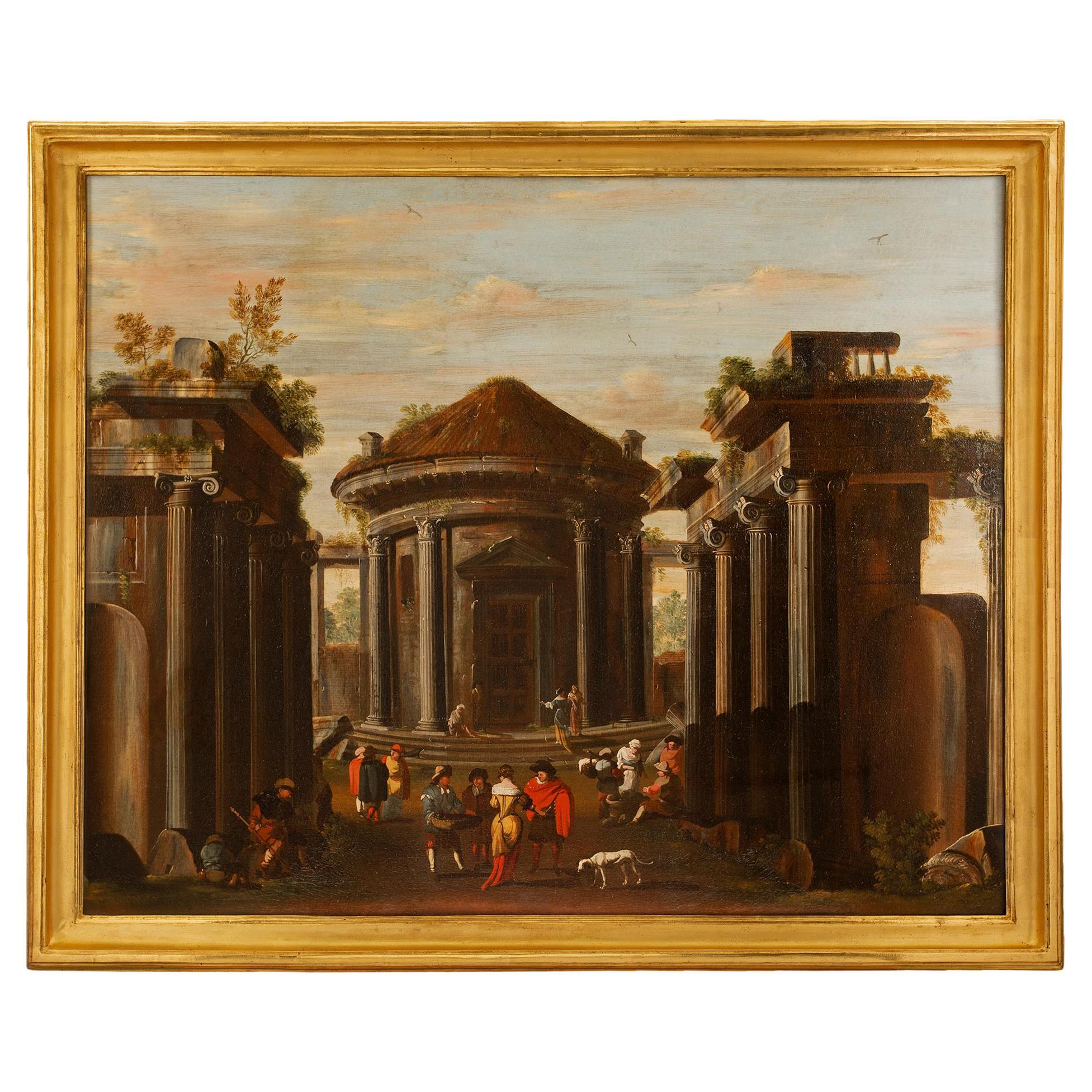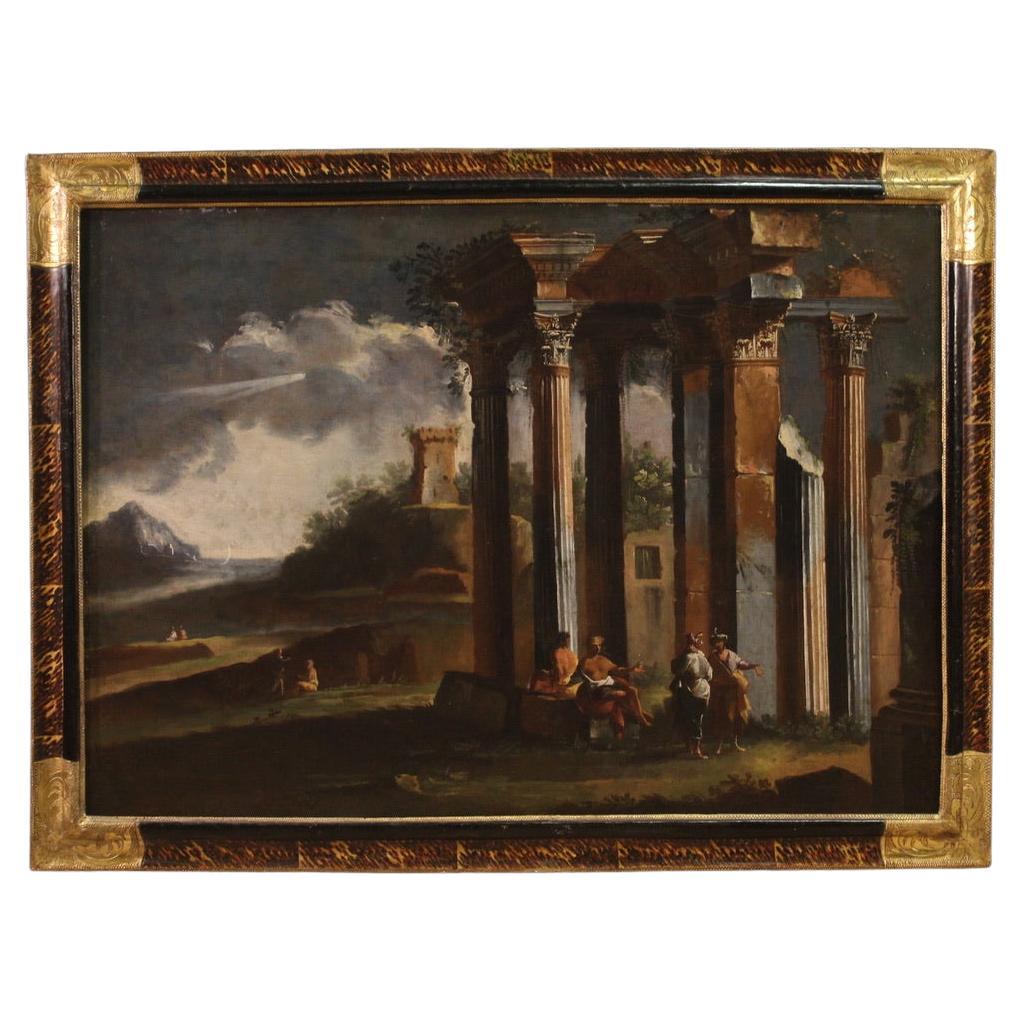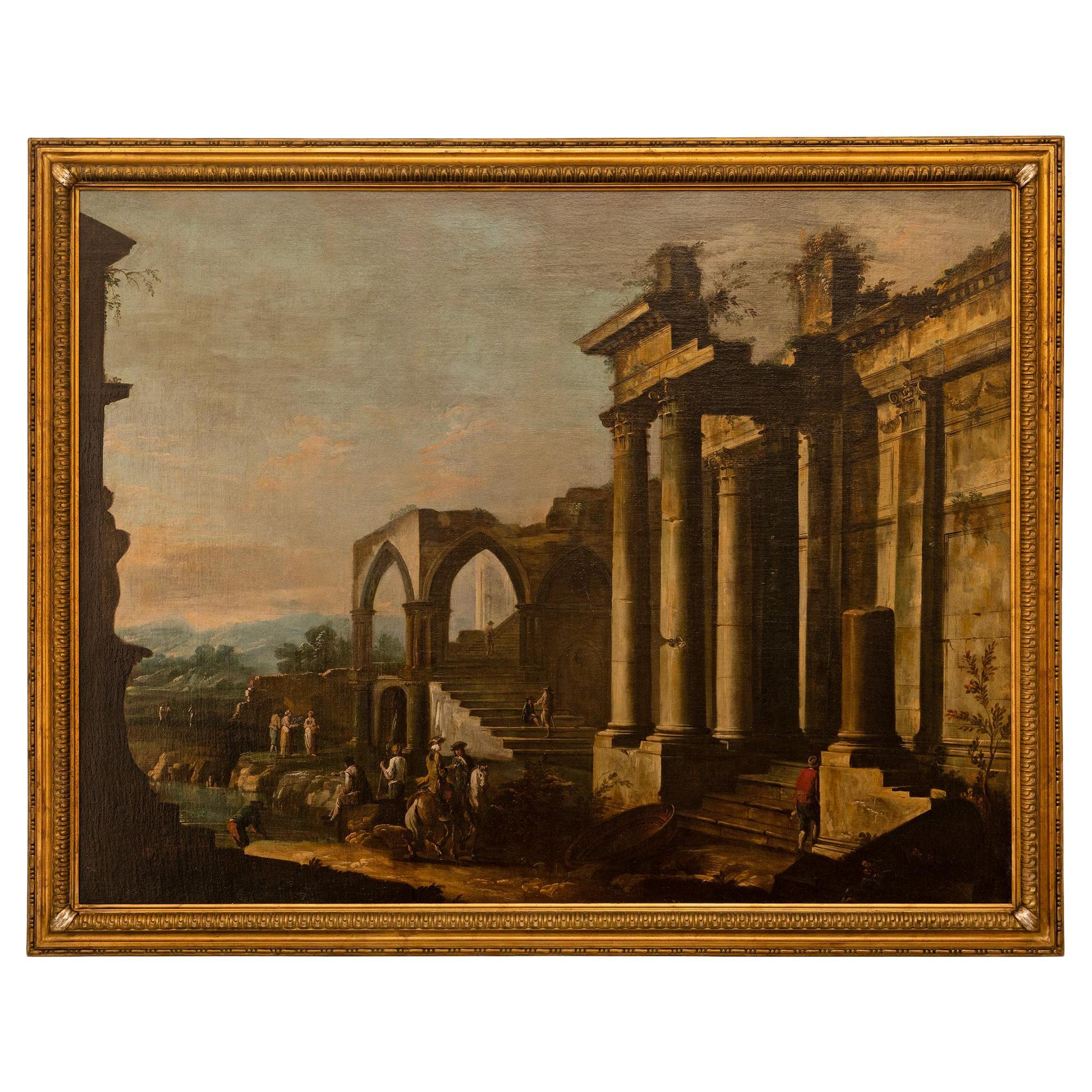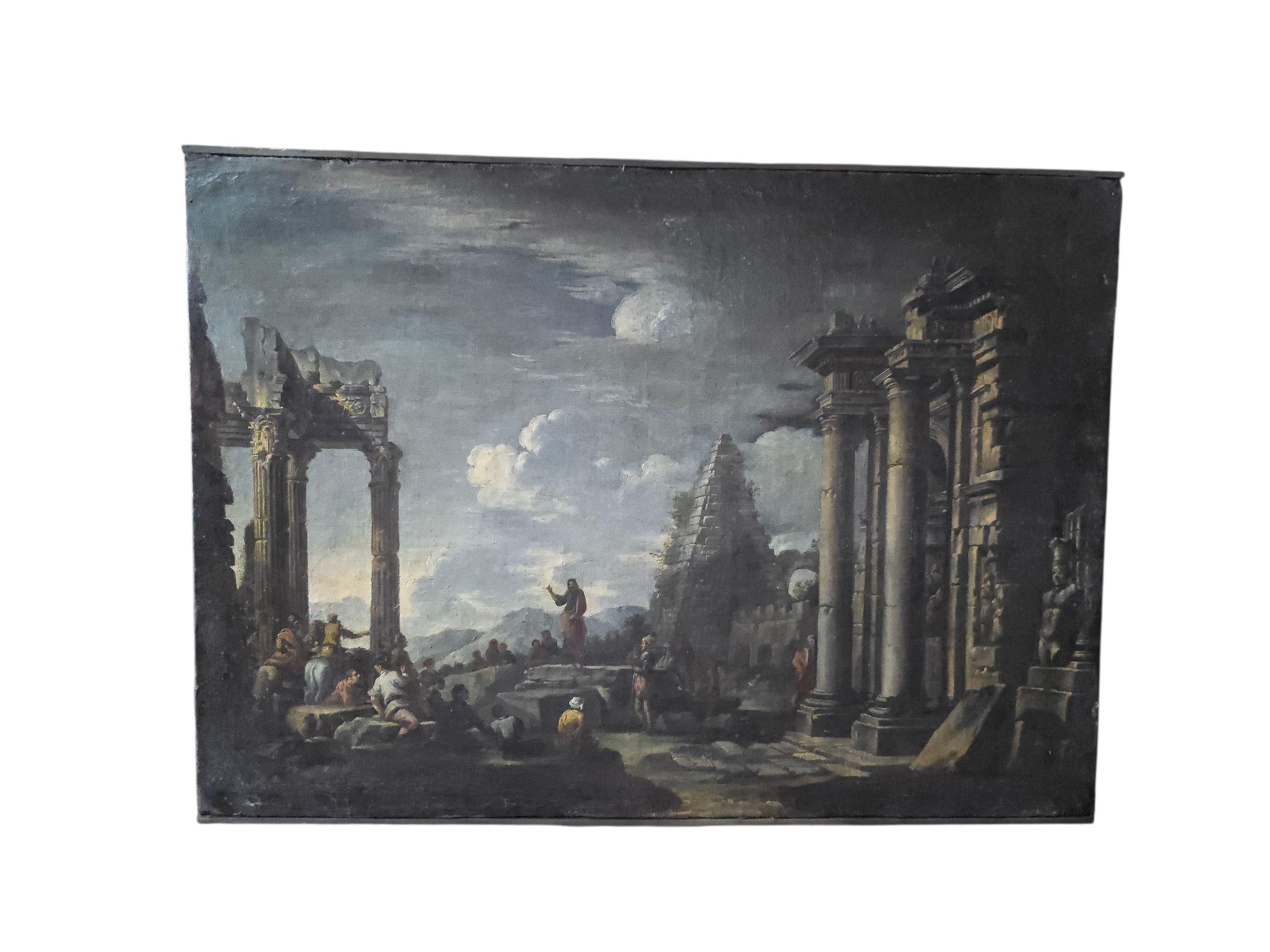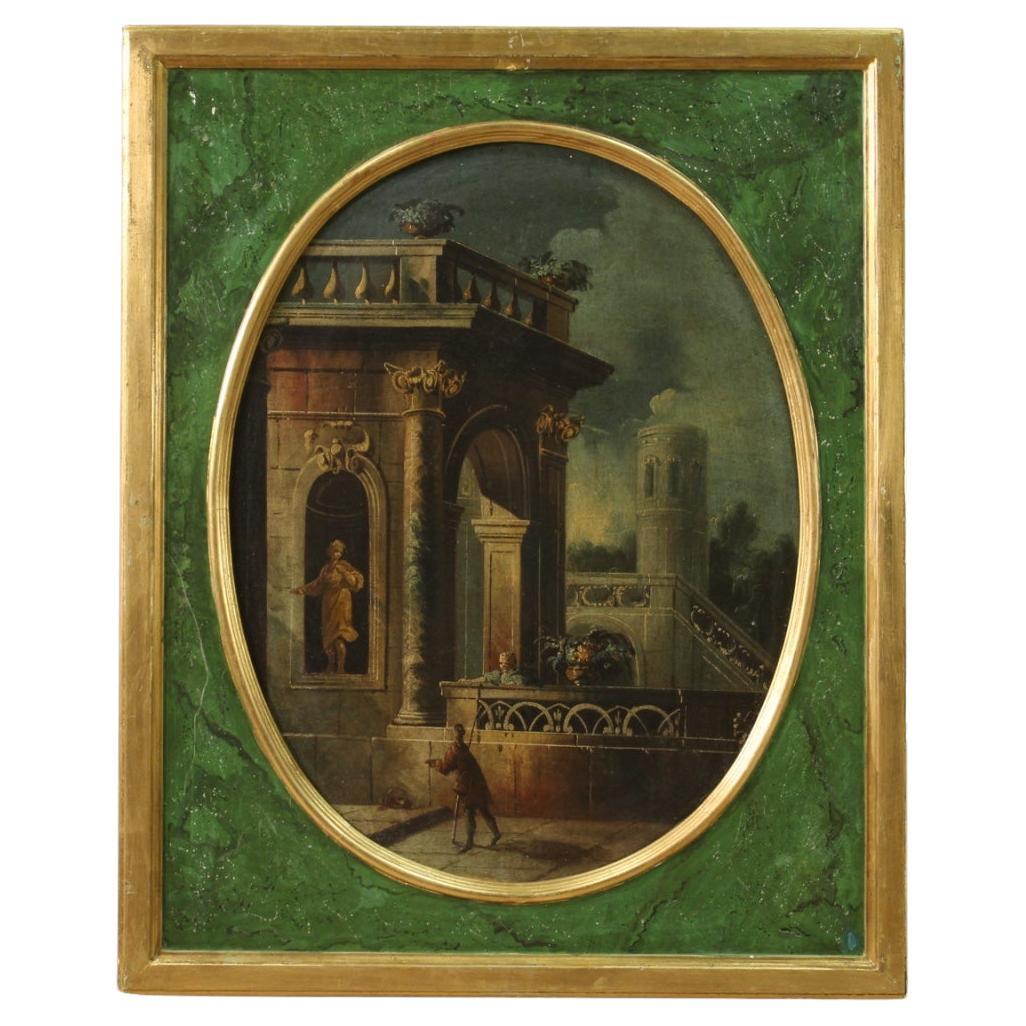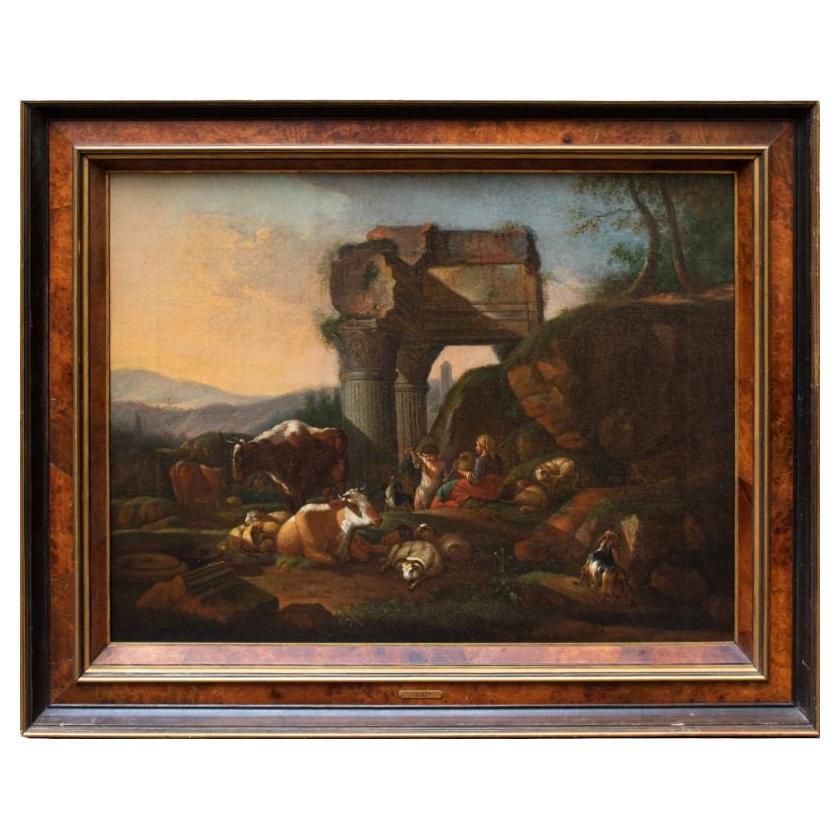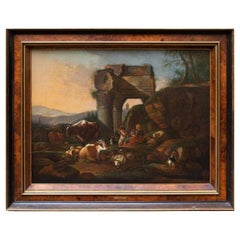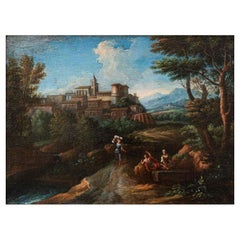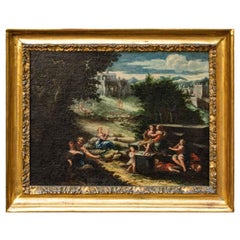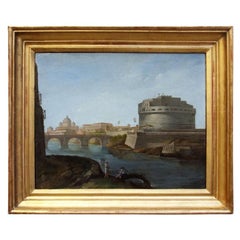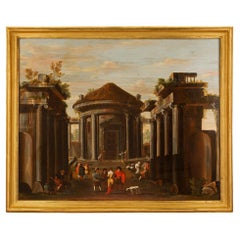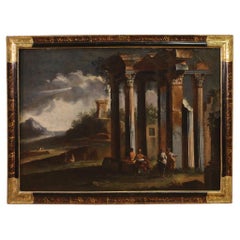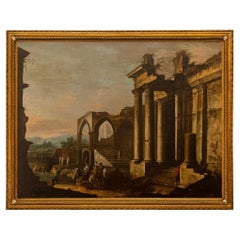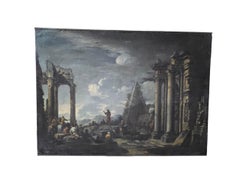Items Similar to 17th-18th Century View of the Temple of Minerva Painting Oil on Canvas
Want more images or videos?
Request additional images or videos from the seller
1 of 14
17th-18th Century View of the Temple of Minerva Painting Oil on Canvas
$3,337.24
£2,471.20
€2,800
CA$4,589.20
A$5,104.37
CHF 2,671.52
MX$62,256.47
NOK 33,568.59
SEK 31,575.59
DKK 21,317.26
About the Item
Painter active in Rome in the 18th-19th century.
View of the temple of Minerva Medica
Oil on canvas, 65 x 78 cm - with frame 71.5 x 85 cm
The painting bears a traditional attribution to François Marius Granet (Aix-en-Provence, 1775 - 1849). The painter was a pupil of David but from 1802 to 1819 he lived in Rome, as evidenced by a series of paintings depicting views of the city and especially of the Roman countryside (Ponte San Rocco in Tivoli, 1810-20, MoMA, New York), and then return there between 1825 and 1830. In the Eternal City Granet devoted himself to landscape painting, inspired by the landscape painting of Gaspard Dughet and Van Lint, expressing a neoclassical sensibility but nevertheless imbued with a romantic vein, capable of evoking 'the spirit of the places' (see L. Salerno, 'Painters of views in Italy (1580 - 1830)', Rome 1991, p. 425, S.85). The canvas depicts a view of the temple of Minerva Medica located on the Esquiline, a decagonal construction covered by a dome of 25 meters, but in reality it is the nymphaeum of the 'Horti Liciniani', the large residence with gardens that belonged to the emperor Gallienus in the third century AD.
The temple was the subject of numerous representations in painting, which recall the vestiges of antiquity, such as the engraving by Giovan Battista Piranesi (1756), the painting by Paolo Anesi with the View of the Temple of Minerva Medica (Private Collection, Rome) and finally that of Jean Baptiste Pillement, preserved in the Warsaw Museum.
- Dimensions:Height: 28.35 in (72 cm)Width: 33.47 in (85 cm)Depth: 1.58 in (4 cm)
- Materials and Techniques:
- Place of Origin:
- Period:Late 17th Century
- Date of Manufacture:17th-18th Century
- Condition:Refinished. Wear consistent with age and use. The painting has been cleaned.
- Seller Location:Milan, IT
- Reference Number:1stDibs: LU5918229057272
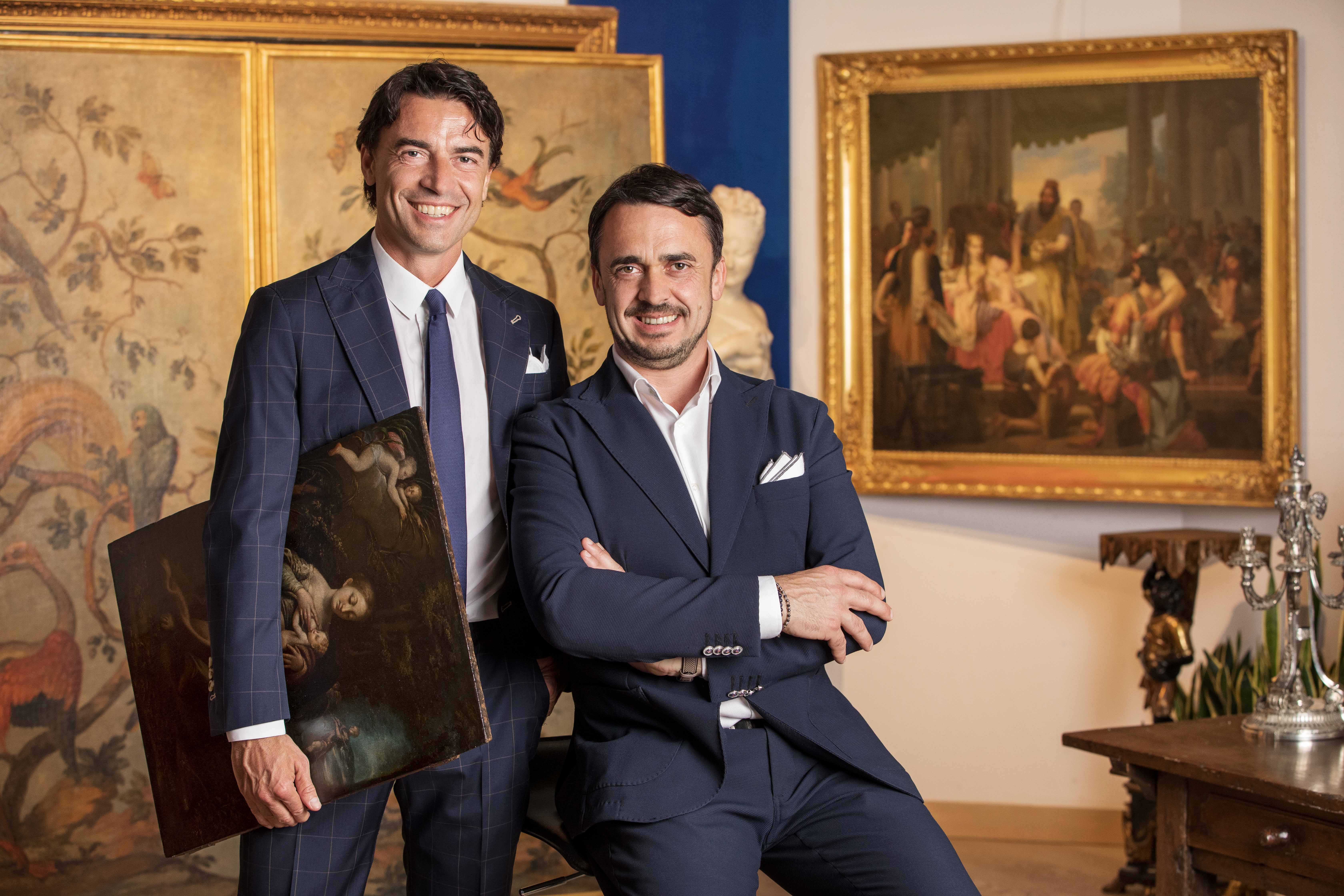
About the Seller
5.0
Vetted Professional Seller
Every seller passes strict standards for authenticity and reliability
Established in 2000
1stDibs seller since 2021
30 sales on 1stDibs
Typical response time: 1 to 2 days
- ShippingRetrieving quote...Shipping from: Milan, Italy
- Return Policy
Authenticity Guarantee
In the unlikely event there’s an issue with an item’s authenticity, contact us within 1 year for a full refund. DetailsMoney-Back Guarantee
If your item is not as described, is damaged in transit, or does not arrive, contact us within 7 days for a full refund. Details24-Hour Cancellation
You have a 24-hour grace period in which to reconsider your purchase, with no questions asked.Vetted Professional Sellers
Our world-class sellers must adhere to strict standards for service and quality, maintaining the integrity of our listings.Price-Match Guarantee
If you find that a seller listed the same item for a lower price elsewhere, we’ll match it.Trusted Global Delivery
Our best-in-class carrier network provides specialized shipping options worldwide, including custom delivery.More From This Seller
View All17th Century Architectural Capriccio with Herds Painting Oil on Canvas
Located in Milan, IT
Circle of Nicolaes Berchem (1620, Haarlem - 1683, Amsterdam)
Architectural capriccio with herds
Oil on canvas, 57.5 x 74 cm
With frame 76 x 93 cm
The examined canvas is...
Category
Antique 17th Century Dutch Paintings
Materials
Canvas
17th Century Roman Landscape Painting Oil on Canvas by Bloemen
Located in Milan, IT
Workshop of Jan Frans van Bloemen (Antwerp, 1622 - Rome, 1749)
Lazio landscape
Oil on canvas, 48.5 x 64.5 cm
The painting, to be considered belonging to the vast production...
Category
Antique Late 17th Century Belgian Paintings
Materials
Canvas
17th Century Rural Landscape with Gallant Scenes Painting Oil on Canvas
Located in Milan, IT
17th century, Emilian school
Rural landscape with gallant scenes
Oil on canvas, 37 x 47.5 cm
With frame 61 x 50.5 cm
The bucolic amenity of the present is reflected in the joyful gallant scenes that dot its surface. The locus amoenus described reflects on the more traditional inflection of Arcadia, which in the literary transfiguration was the scenario par excellence of the most carefree pastoral life and out of this world; the painting is therefore a forerunner of what was professed by the actual poetic academy of Arcadia which was established in Rome in 1690, but enthusiastically testifies to the feverish invitations to its acceptance, then widespread in the most avant-garde cultural salons throughout Italy. First Theocritus and Virgil later had awakened with Idilli and Bucoliche that capacity typical of the natural world to allow an escape from reality; the contemplation of perfect natural fruits that followed would have evoked in the spirits of dreaming men back to origins. The bucolic landscape was able to positively give a rhythm to material life, and constituted the concretization of a place devoid of incivility and ugliness, where only dreams, wild music and homages to fruitful nature were allowed.
In the present painting widespread figures of shepherd children trace the same intent to the sublimation of earthly life, gathered in pairs, while children on the model of the ancient cherubs cheer the field with flowers and petals. The games of these and the sweet affections of the other characters are rendered through liquid and vibrant brushstrokes, flickering with a white light that opposes the dark shadow of the undergrowth. In the distance, the sky tapers with a silvery and flat brushstroke, while the vertical development of the promoters with architectures helps to introject a bright beam of light into the grassy clearing. The foliage and the turf of the landscape piece are rendered through a digital brushstroke, betraying the Italian brand of the present, influenced at the same time by the seventeenth-century European influences that then conveyed to the capital. The evocative culture of the city attracted many artists from the city of Bologna, from the Italian north but also from the territories beyond the Alps, such as Claude Lorrain and Nicolas Poussin. The historical-artistic heritage of the Italian pastoral scenes was thus able to fill up with the more functional and particular formalisms of the charms coming from elsewhere, such as the expressive tremor of the present, similar to the contemporary French lexicon.
The typological restitution from pastoral idyll, in accordance with the intrinsic stylistic qualities of the work, allows us to specify the solid belonging of the present to the Italian hand, similarly to what was then emerging in the pictorial sphere within the Emilian school. In this regard, we should recall the latent influences of two decisive foreign landscape painters who passed through the Emilian belt, such as Claude Lorrain (1600-1682) and Nicolas Poussin (1594-1665); before them, Giovanni Battista Viola...
Category
Antique 17th Century Italian Paintings
Materials
Canvas
19th Century Castel Sant' Angelo Painting Oil on Canvas
Located in Milan, IT
19th century Castel Sant'Angelo
Oil on canvas, 49 x 58.5 cm
The analyzed painting portrays a pleasant view of the city of Rome. Taken from the bank of the Tiber, Castel Sant'A...
Category
Antique 19th Century Italian Paintings
Materials
Canvas
19th Century Florence View Painting Pallmann Oil Paint
Located in Milan, IT
Peter Götz Pallmann (Berlin, 1908 - 1966)
Santa Trìnita bridge in Florence
Oil on canvas applied to wood, 35 x 40 cm
Frame 45.5 x 50.5 cm
Signe...
Category
Antique 19th Century German Paintings
Materials
Canvas
18th Century Nine Views of Rome Painting Tempera on Paper
Located in Milan, IT
XVIII century Views of Rome
(9) Tempera on paper, 9 x 14 cm; with frame 34 x 40 cm
During the seventeenth century the fashion of the Grand Tour spread among the aristocracy, a ...
Category
Antique 18th Century Italian Paintings
Materials
Paper
You May Also Like
Italian Early 18th Century Roman Oil on Canvas, of an Architectural Theme
Located in West Palm Beach, FL
A very attractive Italian early 18th Century Roman oil on canvas, of an architectural theme. The painting is of a central round pavilion amidst ruins accente...
Category
Antique 18th Century Italian Paintings
Materials
Canvas, Giltwood
18th Century Oil on Canvas Venetian Architectural Capriccio Landscape Painting
Located in Vicoforte, Piedmont
Venetian school of the mid-18th century. Oil on canvas painting depicting an invented landscape composition of remarkable pictorial quality. On the right is a ruined building, probab...
Category
Antique 1750s Italian Paintings
Materials
Canvas
Italian 18th century Giltwood, Mecca, and Oil on Canvas painting
Located in West Palm Beach, FL
A most handsome and finely detailed Italian 18th century Giltwood, Mecca, and Oil on Canvas painting, by Antonio Visentini. This beautiful painting depicts Italian ruins with what ap...
Category
Antique 18th Century Italian Paintings
Materials
Giltwood
18th Century Italian Oil on Canvas Depicting Roman Ruins and Figures
Located in Madrid, ES
Antique oil on canvas painting, dating from the 18th century, depicting classical Roman ruins with figures in period dress. The composition reflects the Grand Tour aesthetic, celebra...
Category
Antique Mid-18th Century Paintings
Materials
Hardwood
$5,625 Sale Price
20% Off
18th Century Oil on Canvas Italian Antique Architectures Painting, 1760
Located in Vicoforte, Piedmont
Antique Italian painting from the 18th century. Artwork oil on canvas (glued on a board) depicting a pleasant caprice, view with architectures and characters of good pictorial qualit...
Category
Antique 1760s Italian Paintings
Materials
Canvas
Italian 19th Century Oil on Canvas Painting of a Beautiful Country Estate
Located in West Palm Beach, FL
A most attractive and exquisitely executed Italian 19th century oil on canvas painting of a beautiful country estate. The painting is set within a most ...
Category
Antique 19th Century Italian Paintings
Materials
Canvas, Giltwood
More Ways To Browse
Framed Piranesi
Gaspard Dughet Italian Landscape
Toile Peinte
Used Furniture Belmont Ma
Vintage Van Hoople Painting
Vittorio Rappini
Wade Reynolds
William Breakspeare
William Harnett
William Tull
World War Ii Ghost Army Artist
Zoum Walter
A E Backus
Achille Forgione
Ake Klingberg
Alan Sanborn
Albert Serwazi
Alfred Zwiebel
